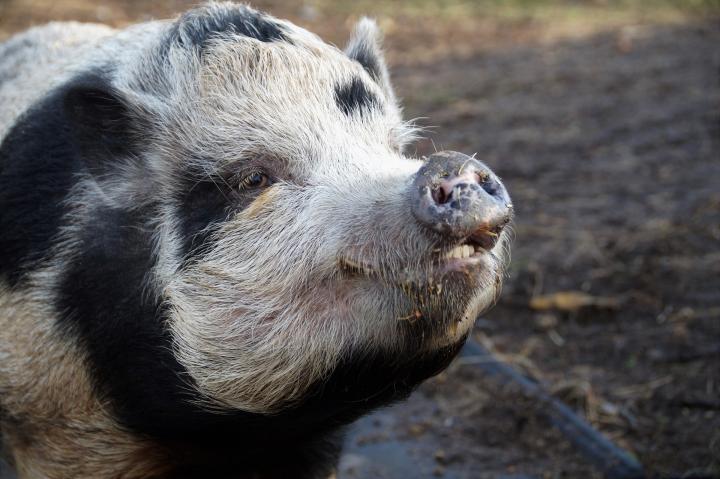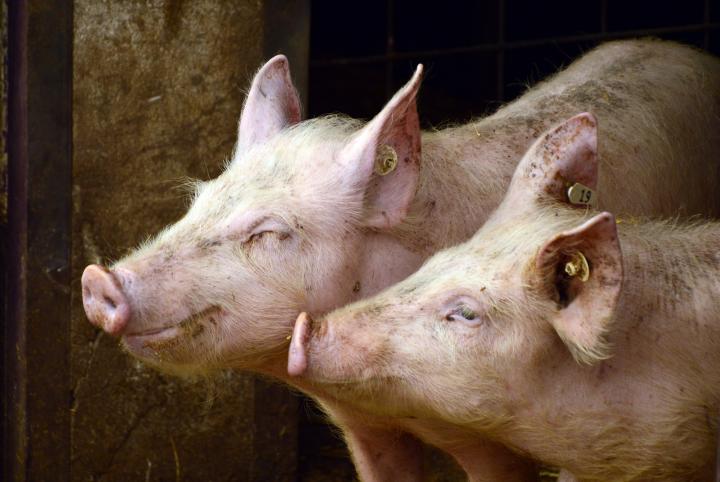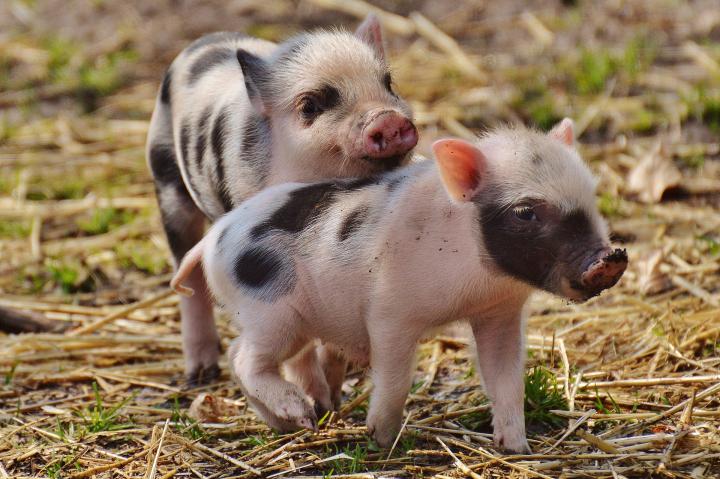Pigs are smart, social, and often misunderstood, so we’ve taken it upon ourselves to prattle on about the perks of pigs with these amazing facts—and answer some common pig questions.
Agriculture itself could scarcely have evolved eons ago without the recycling abilities of the pig. Yet, fewer farmers have a single pig today. Let’s extol the virtues of the pig!
Amazing Facts About Pigs
Pigs are highly intelligent. They consistently rank between the top 4 and top 7 of the most intelligent animals on Earth. Pigs have a good memory and learn quickly. They are considered by animal experts to be at least as trainable as dogs or cats. Pigs can be house-broken and can be taught to use a litter box, much like a cat. Their ability to solve problems is well-documented. During a study in the 1990’s, pigs were trained to move a cursor on a video screen with their snouts and used the cursor to distinguish between scribbles they knew and those they were seeing for the first time. They learned the task as quickly as chimpanzees.
No barnyard animal has a better sense of smell. The large round disk of cartilage at the tip of the snout is connected to muscle that gives it extra flexibility and strength for rooting in the ground. By rooting, and thus disturbing the soil, pigs disperse plant seeds and play an important role in managing ecosystems. Pigs’ sense of smell is so keen that they can smell something that is 25 feet underground! Their sense of smell can also help humans. Some pigs are trained to law enforcement. They can sniff out drugs, just like dogs.

Pigs are one of the cleanest animals. Huh? They have the reputation for being slovenly because they wallow in mud. However, pigs lack sweat glands. They roll around in the mud to stay cool in hot weather. Caking mud on their bodies also prevents sunburn and deters insect infestation. Without mud, pigs could get second-degree burns all over their body.
But why do pig seem to smell so much? A bare pig is odor-free; the odor comes from their living style. If pigs have enough room, they keep their toilet area far away from where they live and muck about. Even newborn piglets will leave the nest to go to the toilet within hours of birth. However, as pigs are often confined or their living area isn’t cleaned frequently enough, the mud, fecal matter, and food waste create various odoriferous gases. Some of these odor-causing chemicals aren’t that different from our own human latrines; it doesn’t matter if it’s of livestock or human origin.

Ever heard the expression “pigging out”? Pigs do have a reputation for being gluttonous, messy eaters. They make snorting and smacking sounds and just delight in eating. (Hey, who are we to judge?) Pigs primarily like to dine on roots and vegetables; this is what they eat in the wild. However, they will eat just about anything you give them. (There’s a joke that says pigs would even eat you, just as we would eat them!) Interestingly, the stomach of a pig is proportionately much smaller than that of a sheep or a cow. They are naturally lean, too, unless they are overfed by humans.
The pig is the friendliest animal on the farm by far: always available for a scratch behind the ears, hardly ever moody, and quick with a grunt of delight. They love to play and engage in mock fighting with each other, similar to play with dogs and other mammals. They form close bonds with other animals and love to cuddle and lie down against each other.

Pigs are social. They live in complex social communities where they keep track of individuals and learn from one another. They cooperate with one another and prefer living in groups, just as a dog likes to be part of a pack. Also, like dogs, they respond to the “top pig,” and will not necessarily think you are the “boss” if you don’t act like one. Winston Churchill famously said, “Dogs look up to man. Cats look down to man. Pigs look us straight in the eye and see an equal.”
Pigs are very peaceful animals and rarely show aggression, even though some pigs are very large and sometimes have tusks. They’ll only show aggression if they or their young are threatened. Pigs are athletic, too; the fastest member of the pig family is the warthog, which can reach speeds of 35 MPH. Interestingly, the pig has cloven hooves—an adaptation shared with more timid prey animals like the sheep, deer, and antelope; pigs, however, are neither timid nor afraid.

Looking for how to find out how much your pig weighs? Measure its girth (in inches) by wrapping a tape measure around the animal just behind the front legs. Then, measure the length from the ears to the base of the tail. The pig’s weight (in pounds) will be equal to the square of the girth, times the length, divided by 400. If math isn’t your thing, buy a hog tape at the feed store; the calculations are built in.
We hope you learned something about pigs today!
What makes pigs happy or sad? Read our quirky article, “Love Talk for Pigs.”













